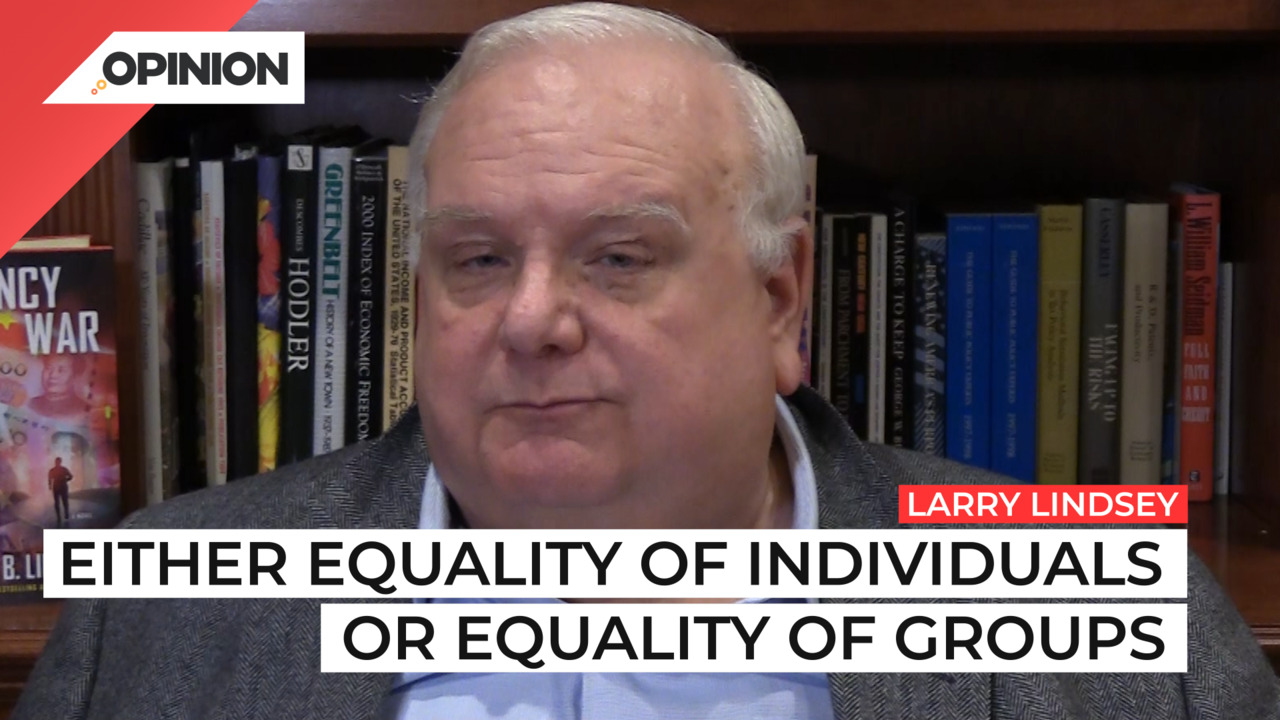
Commentary
-
Our commentary partners will help you reach your own conclusions on complex topics.
Recently, the US Supreme Court heard a challenge on the admission of people to universities based on their race.
It’s a classic affirmative action case. What happens is the two universities, Harvard and University of North Carolina have pretty much explicit quotas for different groups that they will admit. Consider, for example, the situation at Harvard. Back in the 1920s, and 1930s, Harvard had a pretty explicit Jewish quota. Jews made up around 3% of the country, and yet standardized tests, which had just been developed, 25% of those who reached a level that allowed them to be admitted to Harvard, were Jewish – eight times the share of the population.
Well, this was a bit too much for waspy old Harvard. And so the percentage of Jews in the admitted class was tapped at around 15%. Ironically, the wasps running Harvard thought 15% was a high number, because the population was only 3% Jewish.
Today, that same kind of discrimination is being felt by Asian students. The percent of the admissions to Harvard’s incoming class should be between 30 and 35% Asian, based simply on their performance on test scores and grade point averages. Instead, it’s only 18%.
So Harvard is being sued for this. Now, one looks at their practices, and these are numbers that come straight from Harvard, and you can get a sense of the nature of the discrimination.
Harvard sends out recruitment letters, for example, to people that they’ve heard about that they really would like to have apply. And they have SAT cut offs, SAT scores run up to 1600.
Blacks and Hispanics will get a recruitment letter with a score of around 1100. Asian women won’t get one until their score is 1350. And Asian men won’t get one unless their score is at least 1380.
Recruitment letters are only sent to whites in diverse parts of the country, such as Utah and Montana. And there, the cutoff is 1310. So you can see there are several 100 point differences between who they send recruitments letters to, based on race.
In North Carolina, there’s a similar pattern with regard to admissions. Asians who were admitted had an average score of 1216. Whites, 1148. Students with mixed backgrounds, 1085. Hispanics, 1043. And blacks 966.
These are very different average test scores in the state of North Carolina. And in order to have a class that resembles the population, obviously, blacks and Hispanics with lower test scores tend to get admitted, whereas Asians, even with high test scores do not.
There was a study done in the 1990s that took a look at all elite colleges, and it was published – republished, excuse me – by the LA Times. What that study found was that the SAT bonus points given to blacks was plus 230. It was plus 185 for Hispanics, where Asians had 50 points deducted from their SATs scores in determining admissions.
Now, one can argue either side of this, I suppose, from a public policy point of view. If your goal is to have certain percentages of people from each race admitted, then you have to use some kind of discrimination against those who are in groups who do well and give bonuses to those who don’t do well.
But is that a meritocracy? No. It’s race-based quotas. Let’s call it for what it is. Does it defy the U.S. Constitution’s requirement for equal protection under the law? Absolutely. It also defies a lot of U.S. civil rights law. But again, you can either have equality of individuals or you can shoot for equality of groups.
Americans based on the idea of equality of individuals, but that is being questioned. Is it fair? Well, again, it goes back to the same question. Should you be given bonus points because others who look like you don’t do as well? Or should you be penalized because others who look like you, do do well? That doesn’t sound very individualistic. It sounds again, like group-based admissions policy.
The other question is, does it really help? If you admit someone to a college or law school, or what have you, who is significantly below his or her classmates in performance, or was on tests, are you really doing them a favor?
Well, a study of law schools found that half of the blacks who were admitted had grade point averages in the bottom 10% of their class. Well, this has the tendency to create a lot of negative stereotypes. You know, were you an affirmative action lawyer, right? Is that why you were admitted? Or are you a lawyer because you’re actually good at the job? And it also has negative psychological effects on individuals who are in the bottom of their class and are fighting hard to compete and just not making it.
The Supreme Court has taken this up. It will be an important decision. Needless to say, America’s colleges and universities want to have the right to discriminate based on race. Right now, it looks like the Supreme Court won’t let them do it anymore.
This is Larry Lindsey for Straight Arrow News.
-
Election 2024 will boil down to the Great Lakes states
Pollsters and pundits have been engaged in a long debate about how Biden or Trump might win the 2024 election, with much of their focus spent on the “swing state” electoral battlegrounds. While the winners of Alabama or California may be obvious, for instance, who wins Pennsylvania is a more difficult question. Watch the above…
-
Why the Fed should consider Theory of Reflexivity when fixing policy
The Theory of Reflexivity, often used in the context of economics and financial markets, implies that investors don’t base their decisions on reality but on their perceptions of reality. This creates a feedback loop where investors’ perceptions influence economic fundamentals, which in turn alter investor perceptions. Watch the above video as Straight Arrow News contributor…
-
Federal Reserve surpassed its own wildest expectations
On May 14, the U.S. Bureau of Labor Statistics released the most current producer price index (PPI) report, which showed an increase of 0.5% month-over-month in April. After the report’s release, U.S. Federal Reserve chairman Jerome “Jay” Powell said that while he believes the current policy rate is restrictive by many measures, the Fed needs…
-
Polls give slight advantage to Trump in Electoral College
With the U.S. general election only six months away, leading candidates President Joe Biden and former President Donald Trump appear to be engaged in a very close contest. In their 2020 race, the winner of the Electoral College was ultimately determined by a relative handful of voters in just a few swing states, even though…
-
College sports is big money but not everyone benefits
March Madness has wrapped up and Caitlin Clark has emerged as a household name as well as a wealthy student athlete. Earning over $3 million throughout her college career, her success stands in stark contrast to the previous notion that collegiate athletes shouldn’t earn anything beyond their scholarship. Straight Arrow News contributor Larry Lindsey examines…
Latest Opinions
-
 U.S. Department of Defense
U.S. Department of Defense
Congress still trying to figure out how to reduce wasteful military spending
-
 DVIDS
DVIDS
US Navy, Air Force making waves with new weapons at RIMPAC
-
 Getty Images
Getty Images
Israeli PM Netanyahu meets with Trump at Mar-a-Lago
-
 Getty Images
Getty Images
Growing US nuclear power resurgence reaches the nation’s heartland
-
 Getty Images
Getty Images
Beer from the sun, other solar thermal projects get government funding
Popular Opinions
-
In addition to the facts, we believe it’s vital to hear perspectives from all sides of the political spectrum.


